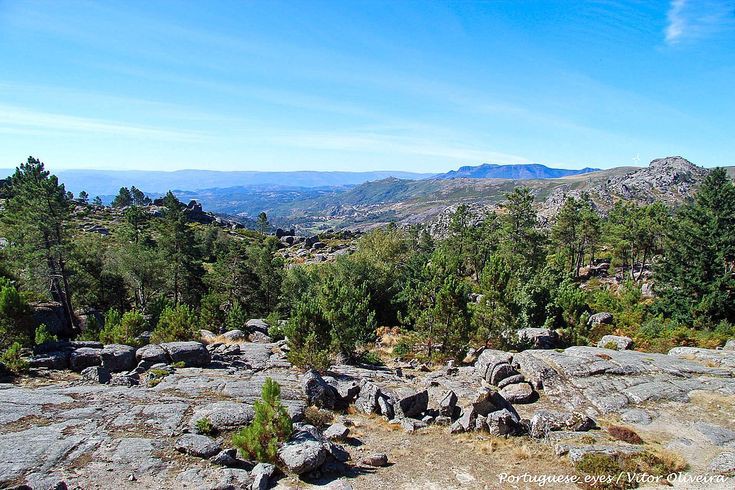
Parque Natural do Alvão
About Parque Natural do Alvão
Description
The Parque Natural do Alvão, tucked away in northern Portugal's Vila Real district, is one of those magical places that makes you wonder why you hadn't discovered it sooner. Look, I've explored quite a few parks across Europe, but there's something special about this 72-square-kilometer wilderness that captures your imagination from the moment you arrive. The rugged granite mountains seem to touch the sky, while crystal-clear streams cascade down ancient rocks, creating some of the most spectacular waterfalls I've ever seen – including the famous Fisgas do Ermelo. What really gets me excited about Alvão is how it manages to perfectly balance untamed nature with traditional Portuguese rural life. You'll find yourself walking through traditional stone villages where time seems to have stopped centuries ago, then suddenly stumble upon a wild landscape where Iberian wolves still roam free (though you'll need to be incredibly lucky to spot one!). The local farmers still tend their fields using age-old methods, and if you're anything like me, you'll find yourself stopping to watch them work, getting a glimpse into a way of life that's increasingly rare in modern Europe.Key Features
• Fisgas do Ermelo waterfall, plunging dramatically for 200 meters through granite formations • Ancient stone villages like Lamas de Olo, where traditional architecture remains perfectly preserved • Rich biodiversity including endangered species like the Iberian wolf and peregrine falcon • Traditional mountain agriculture and pastoral practices still in active use • Network of well-marked hiking trails ranging from easy walks to challenging mountain treks • Unique geological formations, including massive granite outcrops and crystal-clear mountain streams • Traditional water mills and community bread ovens still used by locals • Diverse ecosystem spanning from high mountain peaks to river valleys • Local handicrafts and traditional products, especially the famous Alvão honey • Spectacular viewpoints offering panoramic vistas of the surrounding mountainsBest Time to Visit
I've visited Alvão in every season, and honestly, each one offers something unique. Spring (April to June) is absolutely gorgeous – the wildflowers carpet the meadows, and the waterfalls are at their most impressive from the winter melt. Summer (July to August) brings warm, sunny days perfect for hiking, though it can get pretty hot in the afternoon. But my personal favorite? Autumn (September to October). The changing colors are spectacular, and the temperature is just right for exploring. Plus, you might catch the traditional harvest activities in the villages. Winter (November to March) has its own charm with snow-capped peaks and cozy village scenes, but some trails might be inaccessible. If you're planning a winter visit, just make sure to check weather conditions beforehand and bring appropriate gear.How to Get There
Getting to Parque Natural do Alvão requires a bit of planning, but that's part of what keeps it so special and unspoiled. The easiest way is definitely by car - you'll want that flexibility anyway to explore different areas of the park. From Porto, it's about a 90-minute drive north. The main entrance is near Vila Real, and the roads are well-maintained, though they do get quite winding as you enter the park. If you're relying on public transportation, it's a bit trickier but still doable. You can take a bus from Porto or Vila Real to some of the nearby towns, but you'll need to arrange local transportation to reach the park itself. I'd recommend coordinating with local tour operators if you're not driving - they often run day trips from nearby cities.Tips for Visiting
Having spent quite a bit of time exploring Alvão, I've learned a few things that might make your visit more enjoyable. First off, wear proper hiking boots - the terrain can be pretty rough, and those granite rocks get slippery when wet. And speaking of wet, the weather here can change quickly, so pack layers and a waterproof jacket even on sunny days. Bring plenty of water and snacks, especially if you're planning longer hikes. The villages are scattered, and you can't always count on finding an open café when you need one. A good map is essential - while the main trails are marked, cell service can be spotty in some areas. Try to learn a few basic Portuguese phrases. The locals are incredibly friendly, but English isn't widely spoken in the more remote villages. And please, respect the local customs and private property - many areas are still working farms and grazing lands. If you're interested in wildlife watching, early morning or late afternoon are your best bets. Bring binoculars if you can - the birdlife here is incredible, and you might spot some rare species if you're patient. And here's a pro tip: the light in the late afternoon is absolutely perfect for photography, especially around the Fisgas do Ermelo waterfall. The way the sun hits the water creates these amazing rainbow effects that'll make your Instagram followers jealous. Remember to stick to marked trails and follow the park rules - this helps protect the delicate ecosystem and ensures future generations can enjoy this remarkable place just as much as we do today.More Details
Find Accommodations Nearby
Recommended Tours & Activities
Visitor Reviews
There are no reviews yet. Be the first one to write one.